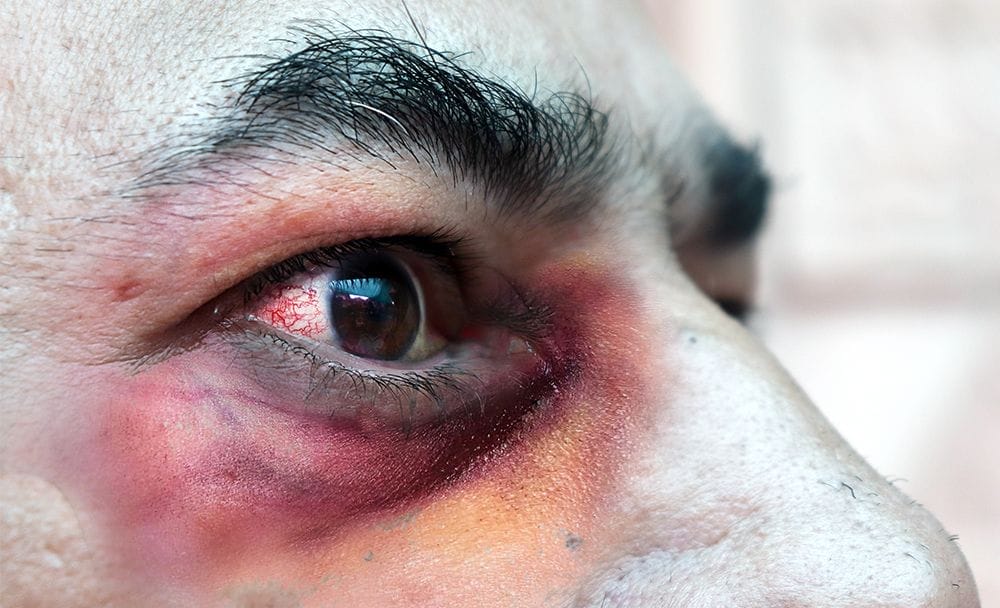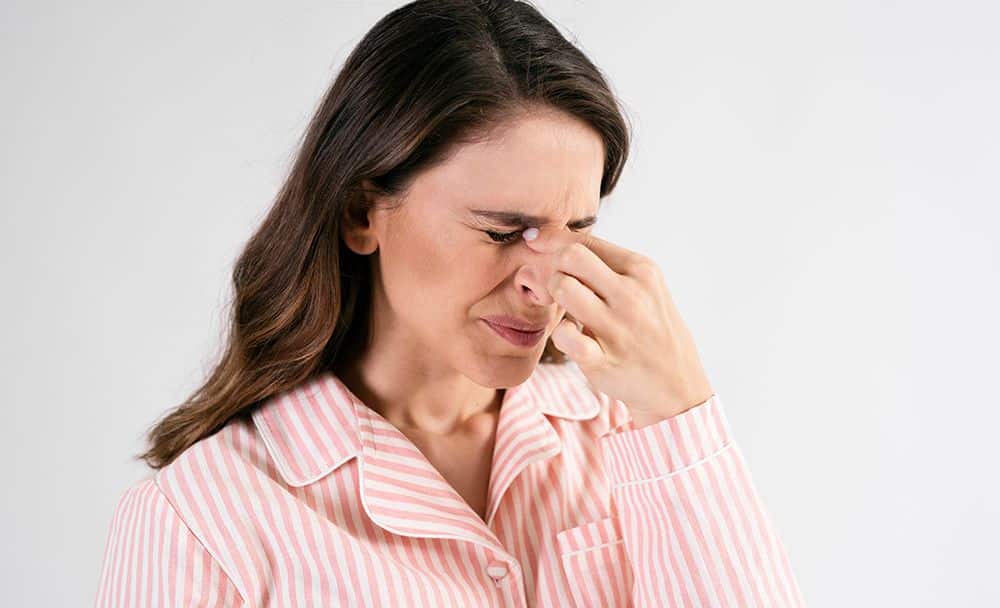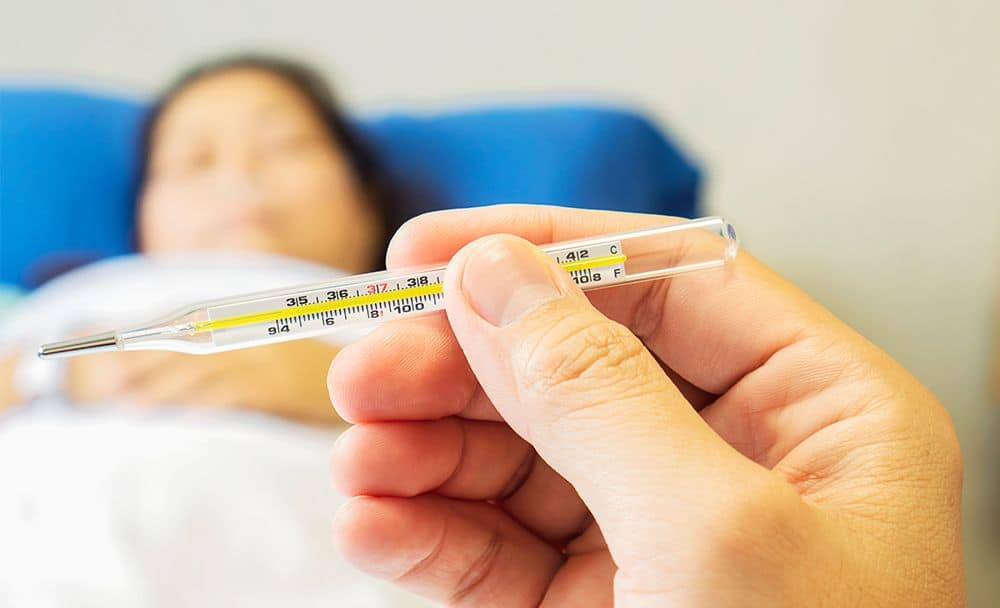
Black fungus, also known as mucormycosis, is a rare but serious fungal infection that can affect individuals with weakened immune systems or underlying health conditions. In recent times, there has been a surge in cases of black fungus among individuals recovering from COVID-19, particularly those who have been treated with steroids. [1] [2] Understanding the symptoms of black fungus is crucial for early detection and timely treatment. In this article, we will explore the various symptoms associated with black fungus.
Understanding Black Fungus (Mucormycosis)
Before delving into the symptoms, it’s important to have a basic understanding of black fungus, its causes, and its risk factors. Mucormycosis is caused by a group of moulds called mucormycetes, which are commonly found in the environment, particularly in soil, decaying organic matter, and plants. These moulds can enter the body through inhalation, ingestion, or through breaks in the skin. [1] [2]
Individuals with weakened immune systems, such as those with uncontrolled diabetes, cancer, organ transplant recipients, or individuals on immunosuppressive medications, are at a higher risk of developing black fungus. Additionally, prolonged use of high-dose steroids, as seen in some COVID-19 cases, can further increase the risk. [1] [2]
Symptoms of Black Fungus
- Sinus and Nasal Symptoms

- One of the most common manifestations of black fungus is rhino-orbital-cerebral mucormycosis, which primarily affects the sinuses, nasal passages, and surrounding structures. Some of the symptoms associated with this type of infection include:
a) Nasal congestion: Persistent nasal congestion or stuffiness that does not respond to usual remedies like decongestants or nasal sprays can be a warning sign of black fungus. [3] [4]
b) Facial pain: The affected individual may experience sharp or throbbing pain in the face, especially in the areas around the eyes, forehead, or cheeks. The pain can be accompanied by tenderness upon touching the affected areas. [3] [4]
c) Black discharge from the nose: Another distinctive symptom of black fungus is the presence of black or dark-coloured discharge from the nose. This can be an alarming sign and should be evaluated promptly. [3] [4]
d) Swelling and redness: Swelling and redness around the eyes, cheeks, or forehead can occur due to the spread of the infection to the surrounding tissues. [3] [4]
- Eye Symptoms
Mucormycosis can also affect the eyes, leading to potentially severe complications. Some of the eye symptoms associated with black fungus include:
a) Vision loss: Black fungus can cause a sudden or gradual loss of vision in one or both eyes. This can occur due to the involvement of the optic nerve or damage to the surrounding structures. [5] [6]
b) Bulging of the eye: Proptosis, which is the protrusion or bulging of the eye from its socket, can occur as a result of the infection spreading to the tissues around the eye. [5] [6]
c) Eye pain and redness: Individuals with black fungus may experience severe eye pain, along with redness and irritation. [5] [6]
d) Restricted eye movements: If the infection affects the muscles responsible for eye movements, it can lead to limited mobility of the eye, causing double vision or difficulty in focusing. [5] [6]
- Oral Symptoms
Mucormycosis can also affect the oral cavity, particularly in individuals who wear dentures or have poor oral hygiene. Some of the oral symptoms associated with black fungus include:
a) Ulcers and necrotic tissue: The infection can lead to the formation of ulcers in the oral cavity, which may appear as blackish or dark-coloured patches. The affected tissues may also become necrotic, leading to the development of black areas. [7] [8]
b) Difficulty in swallowing: The presence of oral ulcers and necrotic tissue can make it painful and challenging to swallow food or liquids. This can lead to reduced appetite and weight loss. [7] [8]
c) Oral bleeding: Black fungus infection can cause bleeding from the gums, tongue, or other oral tissues. The bleeding may be spontaneous or occur during activities such as brushing or eating. [7] [8]
- Skin Symptoms
In some cases, mucormycosis can manifest as a skin infection, particularly when the fungus enters the body through cuts, burns, or other skin injuries. The following skin symptoms may be observed:
a) Skin lesions: Black fungus can cause the formation of skin lesions, which may appear as black or dark-coloured patches. The lesions may be surrounded by redness and inflammation. [9]
b) Tissue necrosis: The infection can lead to tissue necrosis, causing the affected skin to become black, hardened, and painful. This condition is known as necrotizing fasciitis. [10]
c) Open sores or wounds: Individuals with black fungus may develop open sores or wounds that do not heal properly. These wounds may be accompanied by pain and discharge. [9]
d) Skin discolouration: The surrounding skin may exhibit discolouration, appearing pale or bluish due to compromised blood flow to the affected area. [9] - Systemic Symptoms

In advanced cases, mucormycosis can spread beyond the initial site of infection and affect other parts of the body. This can lead to systemic symptoms, indicating a severe and potentially life-threatening condition. Some of the systemic symptoms associated with black fungus include:
a) Fever: The presence of persistent high fever, often accompanied by chills and sweating, can indicate the spread of the infection to other organs. [11]
b) Fatigue and weakness: Systemic infection can cause fatigue, weakness, and a general feeling of malaise. This can be attributed to the body’s immune response and the impact of the infection on overall health. [12]
c) Respiratory distress: If the infection spreads to the lungs, it can cause respiratory symptoms such as difficulty breathing, rapid breathing, or chest pain. [9]
d) Organ dysfunction: In severe cases, mucormycosis can lead to organ dysfunction, particularly affecting the kidneys or liver. This can manifest as decreased urine output, jaundice, or other signs of organ failure.[13]
Experts from the AYUSH departments have suggested that Ayurveda and Unani formulations could potentially aid in preventing the spread of black fungus among individuals who have recovered from COVID-19. The scarcity of medicines has emerged as a significant concern. In critical medical situations, castor oil can be utilised as an eye care treatment for COVID-19 patients due to its antifungal and antimicrobial properties. [14]
The utilisation of Laghu Ahara, Agni Dipaka drugs, and other Ayurvedic formulations can play a significant role in preventing post covid complications including Mucormycosis. These treatments are crucial for maintaining proper homeostasis in the body. [14]
Eye drops prepared using substances like Tankana Sphatika, yashada, shirisha, and Panchavalkala have been found to be effective. [14]
Ayurvedic literature compares the pathogenesis of mucormycosis to Rakataja krimi, and thus krimihara chikitsa (treatment for parasitic infections) is employed to prevent the spread of the disease. [14]
Since the liver is responsible for producing immunoglobulins, which are key components of the body’s defence mechanism, Yakritashodhaka (liver detoxifying) and Raktaprasadaka (blood purifying) drugs are also used in treatment. [14]
Additionally, therapies aimed at balancing Kapha and Pitta, and Vata Avirodhi Chikitsa (treatments to alleviate Vata) play a vital role in managing black fungus treatment. Shodhana (cleansing) through Shirovirechana with Vidanga Taila or Shigru Taila, as well as Vairechanika Dhooma (medicated smoke therapy), have shown high effectiveness. [14]
However, using Ayurveda as the sole means of treatment for Black Fungus still has no medical consensus and requires the consultation of a trained medical professional.
FAQs
Who is at risk of developing black fungus?
Individuals with weakened immune systems, such as those with uncontrolled diabetes, cancer, organ transplant recipients, or individuals on immunosuppressive medications, are at a higher risk of developing black fungus. Prolonged use of high-dose steroids, as seen in some COVID-19 cases, can further increase the risk.
How does black fungus spread?
Black fungus can enter the body through inhalation, ingestion, or through breaks in the skin. The moulds that cause mucormycosis are commonly found in the environment, particularly in soil, decaying organic matter, and plants.
Can black fungus be transmitted from person to person?
No, black fungus is not known to spread from person to person. It is primarily acquired through environmental exposure to the moulds that cause the infection.
How is black fungus diagnosed?
Diagnosing black fungus involves a combination of clinical evaluation, imaging studies, and laboratory tests. A biopsy may be performed to confirm the presence of the fungus. It is important to consult a healthcare professional for an accurate diagnosis.
What is the treatment for black fungus?
The treatment of black fungus typically involves a multidisciplinary approach with antifungal medications, surgical debridement of infected tissues, and management of underlying health conditions. Early detection and intervention are crucial for better outcomes.
Can black fungus be prevented?
While it may not be possible to completely prevent black fungus, there are certain measures that can be taken to reduce the risk. These include maintaining good hygiene, controlling underlying health conditions, avoiding unnecessary use of steroids, and taking precautions to prevent exposure to mould in the environment.
Is black fungus related to COVID-19?
Black fungus has been observed in some individuals recovering from COVID-19, particularly those who have received prolonged treatment with high-dose steroids. However, it is important to note that black fungus can occur in individuals without a history of COVID-19 as well.
Conclusion
Being aware of the symptoms of black fungus is crucial for early detection and prompt medical intervention. If you or someone you know experiences any of the aforementioned symptoms, especially after recovering from COVID-19 or having underlying health conditions, it is important to seek immediate medical attention. Early diagnosis and treatment play a significant role in improving the outcomes for individuals with black fungus. Remember, prevention and timely intervention are key in combating this serious fungal infection.
Disclaimer: This Article is for informative purposes only and does not constitute medical advice. Kindly contact a medical professional before attempting any treatments mentioned in the article yourself.
References:
- Epidemiology and Clinical Manifestations of Mucormycosis | Clinical Infectious Diseases | Oxford Academic (oup.com)
- Where Mucormycosis Comes From | Mucormycosis | CDC
- The link between black fungus and Covid-19 disease in diabetes mellitus patients | Biomedical Research and Therapy (bmrat.com)
- Allergic fungal sinusitis complicated by fungal brain mass – PubMed (nih.gov)
- The Review on Mucormycosis (Black Fungus) – IJFMR
- Mucormycosis: An opportunistic pathogen during COVID-19 – PubMed (nih.gov)
- A rapidly fatal palatal ulcer: Rhinocerebral mucormycosis – ScienceDirect
- Mucormycosis of the hard palate masquerading as carcinoma – PMC (nih.gov)
- Symptoms of Mucormycosis | Mucormycosis | CDC
- Mucormycosis: The Black Fungus – An Insidious Killer | Annals of the Romanian Society for Cell Biology (annalsofrscb.ro)
- Black-fungus-in-India-during-COVID-19-A-systemic-review.pdf (researchgate.net)
- Mucormycosis (black fungus) ensuing COVID-19 and comorbidity meets – Magnifying global pandemic grieve and catastrophe begins – PMC
- Rhino-Orbital Cerebral Mucormycosis: A Fatal Evolution – PMC (nih.gov)
- An insight of mucormycosis (black fungus) in ayurveda (researchgate.net)
















